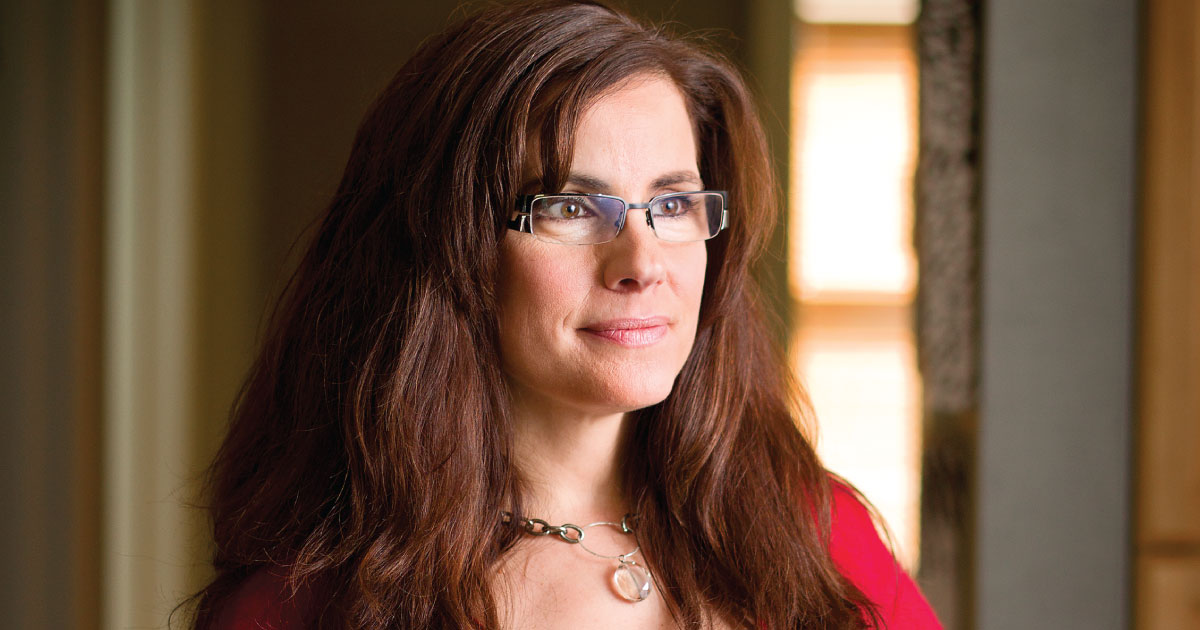Can Entrepreneurship Reduce Recidivism? This Babson Professor Says Yes

2.2 million.
That’s the number of people incarcerated in the United States. To put it in perspective, consider that for every 100,000 people residing in the United States, 655 of them are behind bars. That’s an incarceration rate that puts America ahead of countries that not only are much more populated but also ones that would be characterized as totalitarian.
“It’s an exorbitant rate with profound implications,” says Elizabeth Swanson, professor of English. “We incarcerate more people than any other country on earth.”
The challenges for those many inmates don’t end once they’ve served their time. According to the Bureau of Justice Statistics, about two-thirds of inmates will be rearrested within three years of release. Within five years, that number climbs to about three-quarters.
To help break this cycle of incarceration, Swanson turns to an effective tool: entrepreneurship. For the past eight years, she has guided students in her human rights course as they correspond with inmates. The students help them to identify and refine a business opportunity, with the goal of putting together a business plan that inmates can pursue once they’re released. “It’s entrepreneurship 101,” Swanson says.
The program has had a strong influence not only on inmates, who are given a path to economic self-sufficiency, but also on the Babson students, who form close bonds with those they are helping. Swanson would like to expand this work in the future. “The Babson energy could really make a difference with the recidivism problem,” she says.
Reasons for Recidivism
Many obstacles confront inmates once they are released from prison. Finding a fresh start is difficult. “Once you’ve been an incarcerated person, you are considered a ‘bad apple,’” says Swanson. Former inmates may find their employment opportunities limited because they have to disclose their criminal history on job applications. “They have to check that box, and once they do, their application often goes in the trash,” Swanson says.
Former inmates also may come from impoverished communities where opportunity and support are lacking. Getting caught up in crime can happen far too easily. “Many formerly incarcerated people don’t have good options for rebuilding their lives,” Swanson says. “If you get out and have no support, and if you’ve alienated family, it’s easy to fall back into old patterns.”
Swanson’s work with recidivism began because the professor, who arrived at Babson in 2002 and also teaches courses on African-American literature and literature about witnessing and overcoming atrocities, wanted to take an active approach to solving the problem. “I don’t want to be an academic who thinks about issues in the abstract,” she says. “It’s important to engage with the population I’m writing about.”
Someone Who Believes
Initially, Swanson partnered with an organization called Venturing Out, which worked with inmates to create business plans. When Venturing Out folded in 2013, Swanson teamed up with two of the nonprofit’s former volunteers, Judy Armell and Marilyn Feinberg, who now teach an entrepreneurship class to inmates within a year of release at South Middlesex Correctional Center in Framingham, Mass.
At the same time, Swanson’s students become pen pals with the women in the class and serve as mentors, working with them to refine their business ideas. The women at the prison propose many types of businesses: dog walking, plumbing, cleaning services, hair care, meal preparation. Babson students then perform research on those proposals, looking at competition, startup costs, license requirements, and a host of other issues. “The women in the prison have benefited greatly from the research, as well as the friendship,” says Armell.
When she interacts with the inmates, Armell has heard how much they appreciate what the entrepreneurship program is doing for them. Tracking how many of them actually start businesses after their release is difficult, but the program provides them with many tangible benefits.
“It helps them to think more broadly,” Swanson says. “They are inspired to imagine the future in a different way.”
Tatiana Traulsen ’18 has seen this firsthand. She worked with an inmate who wanted to open a gardening store. “What I think was the biggest impact,” says Traulsen, “was that my mentee had a chance to form a relationship with someone she doesn’t know, but who believes in her and her dreams.”
Not Based in the Past
The women in the prison aren’t the only ones changed by the program. Before Swanson’s students begin their work, the students confess to being fearful, to making assumptions about the women. They mention all they know of prison is the show “Orange Is the New Black.”
Over time, though, their perceptions change. They learn to identify with the women, not simply as inmates, but as human beings.
“I feel like I learned more from her than she learned from me,” Traulsen says. “My mentee taught me that inmates are people just like us, but who simply made a mistake.”
Ashley Sigl ’19 remembers the first letter she received from her inmate partner, who wanted to start an event planning business. The woman wrote that she was a 40-year-old mother of five, and Sigl understood just how much was at stake for this woman’s future.
As the weeks went on, Sigl sensed the inmates’ isolation and how dependent they were on the research that she and her classmates were providing. “The tasks I did for them made me realize the incredible privilege I have,” says Sigl, who admired the women’s courage. “They showed true strength and power. They were women who had families and wanted to create a life not based in the past.”
Something Special
Looking to the future, Swanson hopes Babson becomes more involved in efforts to reduce recidivism. “I feel like Babson, with its incredible entrepreneurial energy, has something special to offer,” she says.
In the short term, she wants to continue growing the number of students who correspond with inmates about business ideas. She also would like for faculty or students to eventually take over the teaching portion of the program when Armell and Feinberg, the two long-term volunteers at South Middlesex Correctional Center, are ready to retire.
As for her long-term planning, Swanson is in the early stages of seeking external funding to launch a formal prison education program at Babson, one that would offer a certificate or degree for inmates. “That would be the ultimate goal,” Swanson says.
Whatever Babson’s involvement, Swanson and her students have seen the impact they can have on inmates, and vice versa. When Traulsen received the last letter from her inmate mentee, she cried. The heartfelt letter expressed much gratitude for Traulsen’s help, and it concluded by saying, “God bless you, always.”
Featured photo credit: Tom Kates






